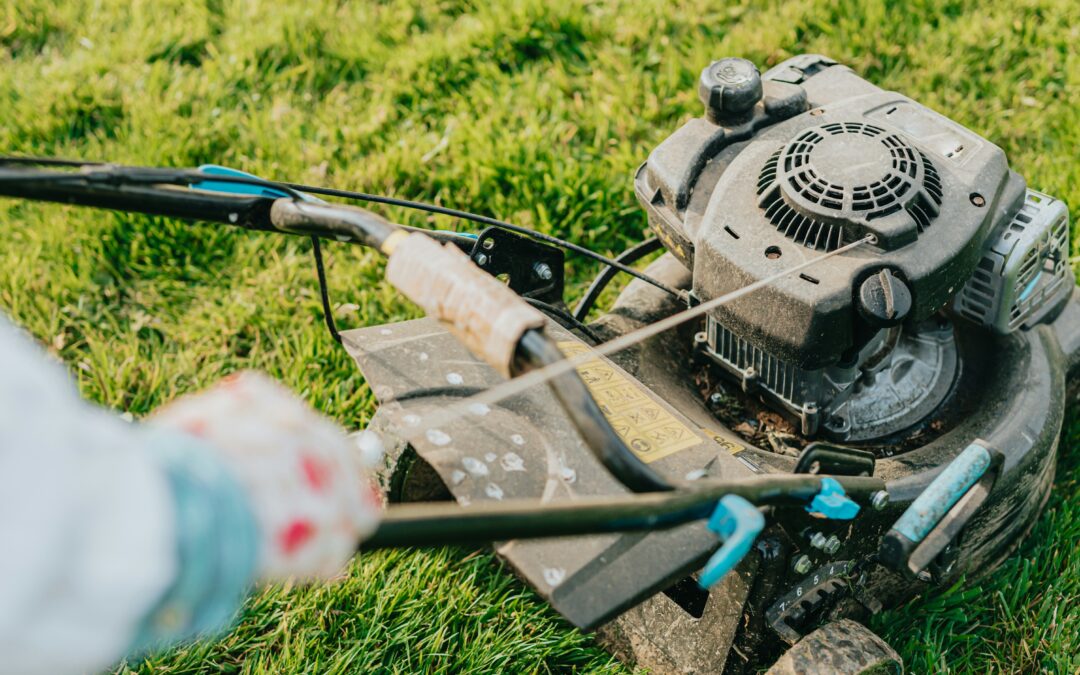A healthy lawn starts in early spring. If you want lush, green grass by summer, the groundwork begins as the weather warms and the soil softens. The right early spring lawn care routine is essential for homes in Arkansas, where fluctuating temperatures and humidity can make yards vulnerable to pests, weeds, and patchy growth. In this guide, we will walk you through the most effective early spring lawn care tips to help you keep your Arkansas yard looking vibrant all year long.
Why Is Early Spring Lawn Care So Important?
Early spring is when your lawn starts waking up from winter dormancy. During this transition, your grass is especially sensitive to changes in moisture, soil temperature, and foot traffic. Starting lawn care too late can result in weak root systems, uneven growth, and pest infestations that are difficult to control later in the season.
To give your yard the best start possible, focus on a combination of cleanup, fertilization, weed control, and pest prevention – all customized to Arkansas’s unique growing conditions.
Step 1: Start with a Yard Cleanup
Clearing your lawn of winter debris is essential.
Leaves, twigs, and other organic matter left behind can smother your grass and create the perfect breeding ground for mold and pests. Use a rake to remove thatch buildup (the layer of dead grass between the soil and fresh blades), which can block essential nutrients and water from reaching the roots.
Removing debris also allows you to assess any areas of your lawn that may need extra attention, such as bare patches or waterlogged spots.
Step 2: Test and Treat Your Soil
Healthy soil is the foundation of a thriving lawn.
Start by testing your soil’s pH balance. Arkansas lawns typically prefer a pH between 6.0 and 7.0. You can buy a home test kit or contact a local extension office for professional testing. If your pH is off, you may need to add lime (to raise pH) or sulfur (to lower it).
Now is also the ideal time to aerate your lawn if the soil is compacted. Aeration helps air, water, and nutrients penetrate deeper, encouraging stronger root development.
Step 3: Apply a Spring Fertilizer
Spring feeding jumpstarts your lawn’s growth.
Choose a fertilizer with a balanced blend of nitrogen, phosphorus, and potassium. These nutrients help strengthen roots and encourage lush, green blades. Look for a slow-release formula for longer-lasting results, and follow the application directions carefully to avoid overfeeding.
If you are unsure which fertilizer to use, a lawn care professional can help assess your lawn’s needs and recommend the right product.
Step 4: Prevent Weeds Before They Start
Pre-emergent weed control is your best friend in spring.
In Arkansas, common weeds like crabgrass, clover, and dandelions begin sprouting as the ground warms. Apply a pre-emergent herbicide in early spring before weeds germinate. Timing is critical – once weeds have emerged, this treatment is no longer effective.
For stubborn areas, you may also need to follow up with a post-emergent spray later in the season.
Step 5: Keep an Eye on Pests
Pest control should begin before you see pests.
Early spring is a key time to stop insects like grubs, ants, and fleas before they begin nesting in your yard. Look for early signs like small patches of dead grass or increased bird activity (they are often feeding on grubs below the surface).
Professional lawn care companies can apply targeted treatment to prevent infestations while keeping your lawn safe for kids and pets.
Step 6: Mow Smart, Not Short
The first mow of the season sets the tone.
As your lawn starts to grow, set your mower blade high. Cutting your grass too short can stress it out and invite weeds. Ideally, only remove one-third of the blade height at a time.
Sharpen your mower blades before the season starts to avoid tearing the grass, which can make it more susceptible to disease.
Step 7: Water the Right Way
Watering in spring should be light and consistent.
While Arkansas typically sees spring rain, monitor your lawn and water only when necessary. Early overwatering can lead to shallow roots and fungal growth. Aim to water early in the morning and allow the soil to dry slightly between sessions.
Early Spring Lawn Care FAQs
1. When should I start lawn care in Arkansas?
Begin as soon as the soil is workable – typically late February to early March, depending on your region.
2. How often should I fertilize in spring?
One application in early spring is often enough, but some lawns may benefit from a second light treatment in late spring.
3. Do I need professional lawn care help?
If you are unsure what products to use or how to treat specific lawn issues, a licensed lawn care specialist can provide tailored solutions.
Keep Your Arkansas Lawn Healthy Year-Round
Early spring lawn care lays the foundation for a healthy, pest-resistant yard throughout the year. By tackling soil prep, fertilization, weed prevention, and pest control now, you’ll save time and money – and enjoy a lush, green lawn all summer.
At West Termites & Pest, we offer expert lawn care, pest control, and termite treatment services across Arkansas and Oklahoma. Our team understands the unique climate and seasonal challenges your yard faces. We provide customized treatment plans and a free consultation to help you get your lawn in top shape. Contact us today and let us help you grow a healthier, greener yard this season!


Recent Comments